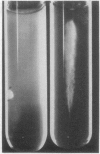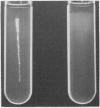Abstract
Decreasing the agar concentration of a counting medium from the usual 1.5% resulted in larger colonies with less interference from gas in Clostridium botulinum 115B and C. sporogenes PA 3679. Optimal agar concentration was 0.65% for C. botulinum with 24-hr incubation and 0.50% for C. sporogenes with 48-hr incubation. Lower concentrations yielded growth too diffuse for counting. Motility was considered the explanation for increased colony size in softer agar. The greater the degree of motility, the greater would be the diffusibility expected, and thus the higher the agar concentration required to insure discrete colonies. For quantitating motility, evaluations were made by use of microscopic examination of liquid cultures and rate of diffusion in a semisolid medium. With both criteria, the degree of motility of C. botulinum 115B clearly exceeded that of C. sporogenes PA 3679. Small-colony variants of C. botulinum in 0.65% agar yielded only small colonies on subculture, with a corresponding decrease in degree of motility of the cells by both criteria. Colony size of the nonmotile C. perfringens ATCC 3624 was unaffected by lowered agar concentrations.
Full text
PDF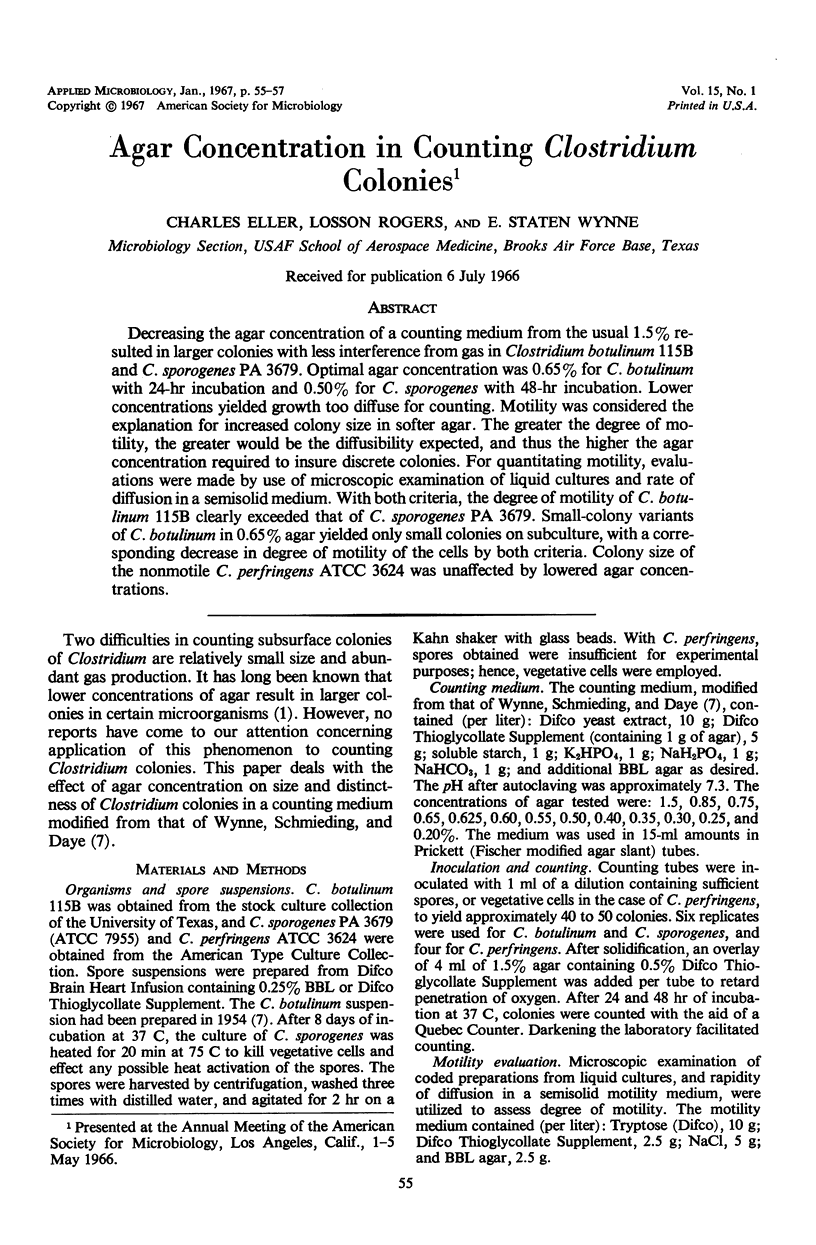
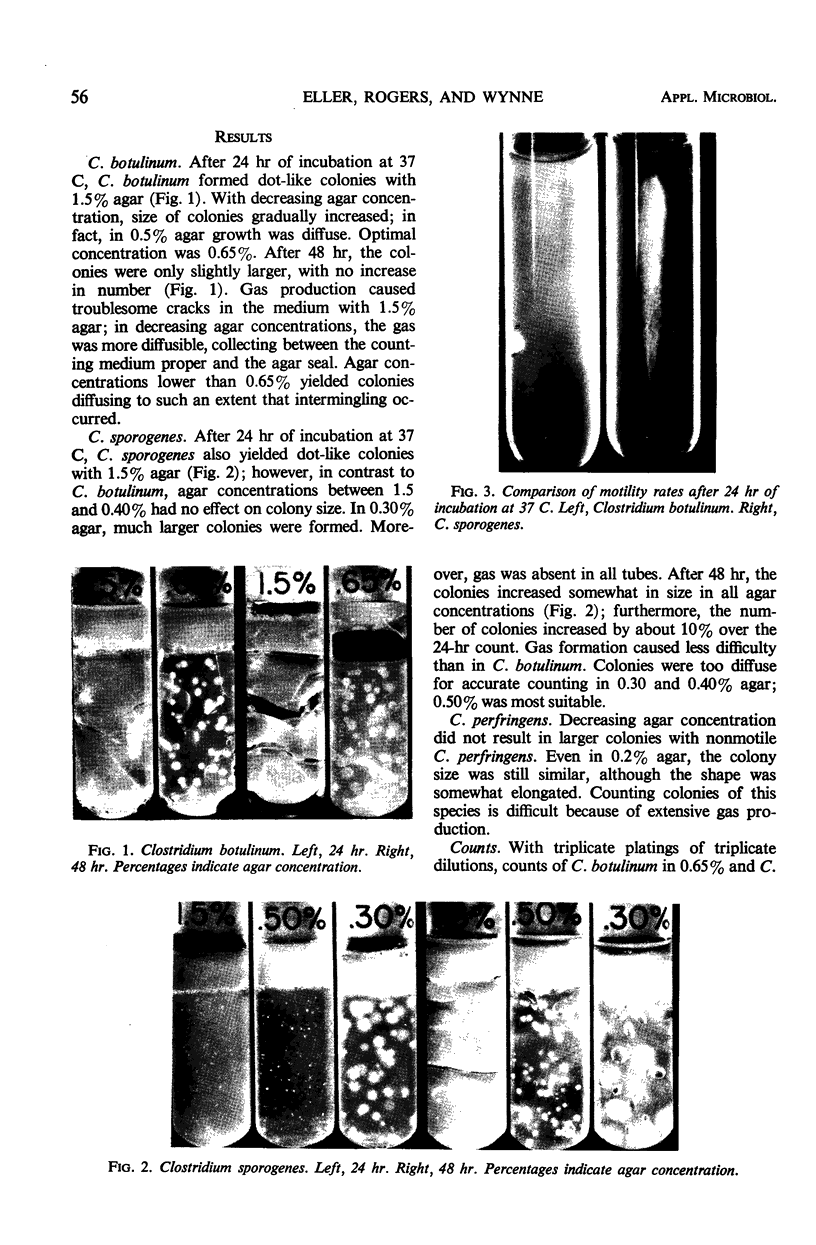
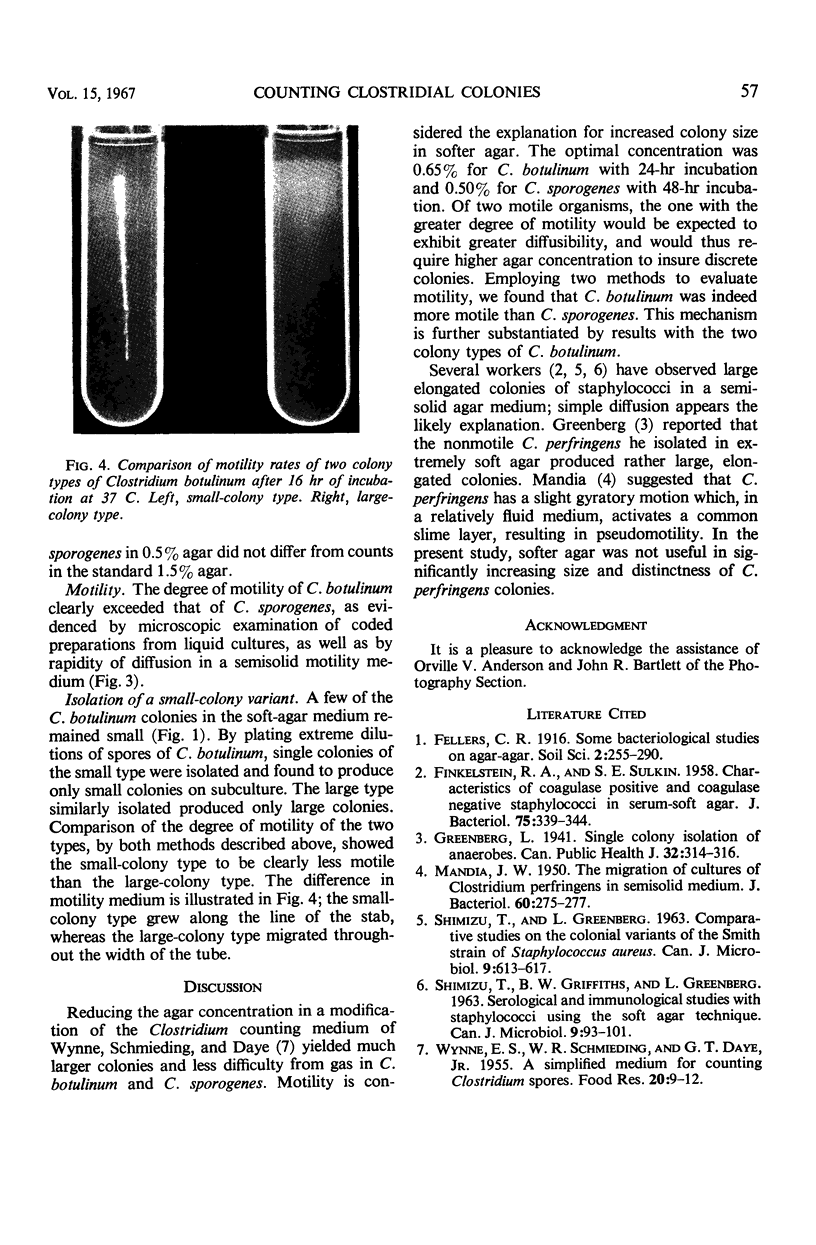
Images in this article
Selected References
These references are in PubMed. This may not be the complete list of references from this article.
- FINKELSTEIN R. A., SULKIN S. E. Characteristics of coagulase positive and coagulase negative staphylococci in serum-soft agar. J Bacteriol. 1958 Mar;75(3):339–344. doi: 10.1128/jb.75.3.339-344.1958. [DOI] [PMC free article] [PubMed] [Google Scholar]
- MANDIA J. W. The migration of cultures of Clostridium perfringens in semisolid medium. J Bacteriol. 1950 Sep;60(3):275–277. doi: 10.1128/jb.60.3.275-277.1950. [DOI] [PMC free article] [PubMed] [Google Scholar]





